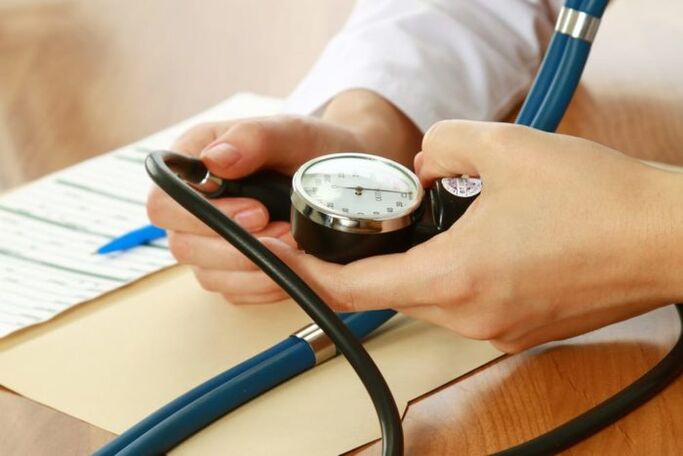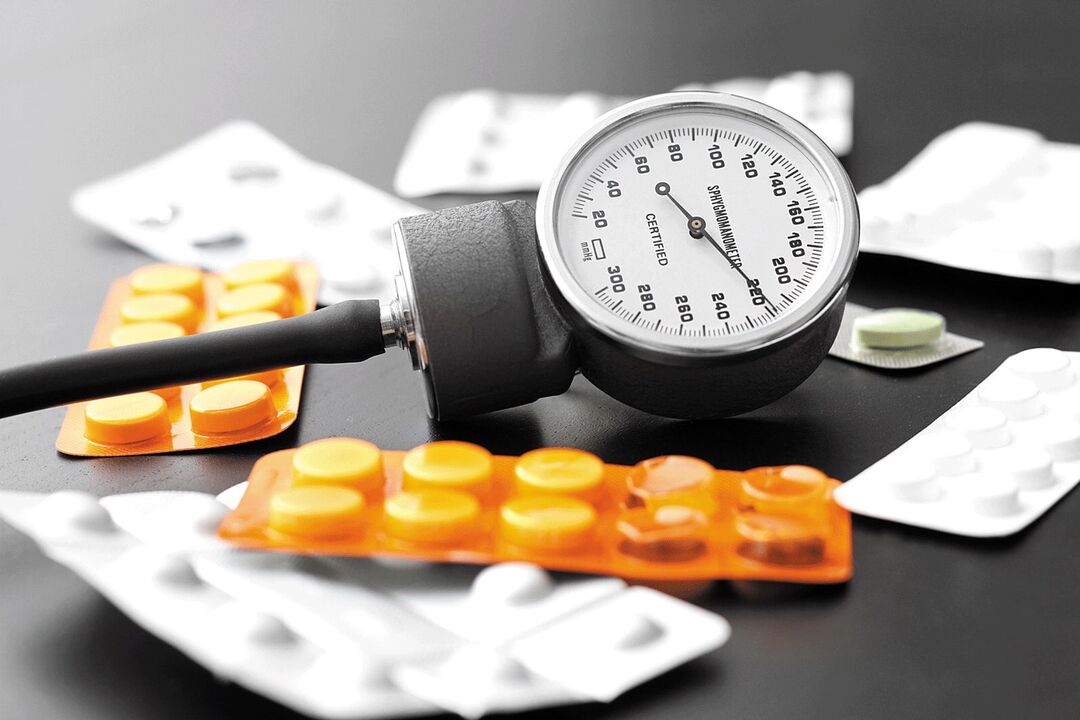The fact that a diagnosis of hypertension is considered is only taken into account when the facial blood pressure is persistently elevated or jumping frequently occurs. At the same time, different stages of hypertension show different advantages. In the early stages of the disease, people are often unaware that the problem is developing. Sometimes even a slight increase in temperature is more of a concern than a violation when arterial hypertension develops. Pathological types vary in the intensity of symptoms and the presence of concomitant diseases in the body. In fact, even in the absence of obvious signs, high blood pressure is no less dangerous than supplements for various diseases in the body. Signs of high blood pressure include: tremors, nausea, headache, flies in front of your eyes. All symptoms occur due to problems with blood flow to internal organs.

stage of high blood pressure
Hypertension is clinically classified into stages and severity according to the effects on the whole body and the strength of accompanying symptoms. There are 3 stages. The phasing helps physicians systematize the diagnostic data obtained and choose the right strategy to correct the patient's condition.
Stage 1
The blood pressure level in the first stage of hypertension does not exceed 159/99. This increase may continue for several days. Rest helps normalize blood pressure and eliminate stress. As the disease progresses, it will not be so easy for the stress to return to normal.
At this stage of disease development, there is no indication that it has an effect on target organs. For this reason, arterial hypertension is usually asymptomatic. Hidden pain in the head and heart occurs only sometimes when sleep is disturbed.
At the time of clinical diagnosis, it can be determined that there is a slight increase in the tension of the fundus arteries. In the first stage of the disease, there is a small risk of developing a hypertensive crisis, which usually occurs only due to the influence of the external environment on the body. Menopausal women are also at increased risk. The initial phase responded well to treatment. For this, lifestyle changes are often sufficient. Medication is not always required. Prompt treatment and strict compliance with doctor's orders have a good prognosis.
Stage 2
This is the stage of active pathological changes in blood vessels - severe hypertension. The pressure in the second stage reached 179/109. Rest does not restore its level. A person complained of severe headaches, shortness of breath with exertion, worsening sleep, dizziness, and increased heart rate.
This stage is characterized by the first signs of development from internal organs. The most common symptoms of severe hypertension are:
- signs of left ventricular hypertrophy;
- narrowing of the retinal artery lumen;
- increase cholesterol in the blood;
- Protein is present in urine.
Stage 2 hypertension significantly increases the risk of dangerous complications that can lead to stroke. It doesn't work without ongoing medical care.
Stage 3
This is the stage of target organ disease due to pathological changes in the arteries and impaired systemic blood flow. The third stage is very severe high blood pressure. The final stage of hypertension is the most severe and widespread disease in the body, affecting target organs. The eyes, kidneys, brain and heart are most affected. In the third stage, the pressure is stable, and it is difficult to return to normal with drug treatment. Usually there are jumps of up to 180/110 mmHg. Art. even more. Symptoms are similar to those that occur in stage 2, but are also accompanied by pathological manifestations of the involved organs. Memory often deteriorates, heart rate is greatly disturbed, and vision decreases.
This stage is dangerous because it always affects the heart. Its contractility and impulse conduction in the myocardium are disturbed.
degree
With the increase in blood pressure and the loss of the effect of the measures taken, it can be assumed that the disease is developing. The optimal blood pressure level is 120/80. The standard range for systolic blood pressure is 120 to 129 and for diastolic blood pressure is 80 to 84. There is also a higher normal pressure - up to 139/89 mmHg - when a person is feeling well. Art. In medicine, high blood pressure is divided into 3 degrees.
my degree
1st degree arterial hypertension is mild, characterized by a drop in pressure and fluctuations from 140/90 to 159/99. In this case the risk of developing a crisis is minimized and there are no symptoms of dysfunction of other organs and the central nervous system. In order to suppress attacks, in addition to taking special pills, it is necessary to relax a little, try to avoid stress, walking and positive emotions are good for health.

If systolic blood pressure does not exceed 159, and diastolic blood pressure - 99 mm Hg. Art, the person was then diagnosed with mild hypertension - grade one. It is characterized by such signs:
- headache that worsens with exertion;
- A tingling sensation on the left side of the chest that radiates to the shoulder blade and under the arm;
- intense dizziness, which may cause fainting;
- Heartbeat;
- black fly;
- tinnitus;
- sleep disorder.
If they develop, a person will no longer notice the symptoms listed. The onset of high blood pressure can begin under the influence of stress and, with the right help, have no consequences.
secondary
Degree 2 hypertension begins to develop more aggressively. Stress levels have reached 160/100 - 179/109. There are signs of a hypertensive crisis - cold sweats, goose bumps on the skin, redness of the skin on the face.
Symptoms of grade 2 disease include:
- Transient cerebral ischemia - deterioration of blood flow to the organs;
- Increased blood creatinine concentration;
- narrowing of retinal arteries;
- left ventricle enlargement;
- protein in the urine, which is found when the test is done;
- persistent fatigue;
- nausea;
- head pulsation;
- facial swelling;
- profuse sweating;
- damage to internal organs;
- numbness of fingers;
- blurred vision;
- crisis.
Medications do not respond well to normalizing the patient's condition. Doctors focus not only on stress levels, but also on how fast the disease is progressing. Second-degree high blood pressure can affect the kidneys. Patients almost always complain of discomfort.
Level 3
Grade 3 hypertension is the most severe. When it occurs, vision drops dramatically, memory deteriorates, tachycardia frequently occurs and there is a high risk of hypertensive crisis. Complications of this condition include blood clots, encephalopathy, aneurysms, kidney and left ventricular failure of the heart, bruising all over the body, and swelling of the optic nerve. Pathology is irreversible. With third-degree hypertension, the patient must need outside help and care. The main symptoms of high blood pressure are:
- Arrhythmia;
- Unsteady gait;
- severe visual impairment;
- Violation of blood flow in the brain, causing paralysis and paralysis;
- Crisis, with confusion and speech barriers;
- severe heart pain;
- coughing up blood;
- Limited mobility and self-service capabilities;
- Unable to communicate properly.
These symptoms suggest the progression of hypertension and the involvement of new organs in the disease. Gradually, more irreversible complications appeared.
By risk factor
First, hypertension is dangerous because of its multiple and often irreversible complications. The cause of disability or death in most patients is not high blood pressure, but acute disease of other organs caused by high blood pressure.
The most dangerous conditions are avascular necrosis, cerebral hemorrhage, heart attack, kidney failure. To prevent various complications related to other organ dysfunctions, doctors determine the level of risk during examinations. The risk level is represented by a number from 1 to 4. It turns out that the diagnosis contains information about the degree of damage and the risk, eg GB 2 degree, risk 4.
low risk (negligible)
Risk indicators for the development of hypertensive complications were observed in women under 65 and men under 55 with mild hypertension in stage 1. Over the next 10 years, only 15% of people will develop additional heart and blood vessel disease due to high blood pressure. These patients are usually seen by a GP because there is no point in going to a cardiologist for serious treatment.
A person will need to make lifestyle changes for the next 6 months when the slight risk remains. This will lead to positive developments. If there is no result and blood pressure cannot be lowered, a change in the strategy for managing the patient and the implementation of drug therapy are recommended.
medium risk
This group of patients includes hypertensive patients, and the blood pressure index does not exceed 179/110. Typically, these people have 1 or 2 of the following risk factors:
- smokes;
- genetics;
- obesity;
- high levels of cholesterol;
- lack of physical activity;
- Impaired glucose tolerance.
Dangerous cardiovascular disease develops in 20% of cases over the next 10 years. Organizing an appropriate lifestyle is an integral part of staying healthy. For 3-6 months, medication may not be prescribed to allow the patient to restore as much health as possible through lifestyle changes.
high risk
This risk group includes patients with an index of 179/110 or higher and more than 2 predisposing factors. In addition, people with target organ damage, diabetes, retinal vascular disease, and atherosclerosis are also at high risk.
There may also be no risk factors, but people with stage 3 hypertension are at high risk anyway. They must be treated by a cardiologist. The risk of complications is 30%. Normalization of lifestyle is only used as an additional strategy for taking specially selected medications. The most effective drug should be selected as soon as possible.
treatment method
The main goal of treating high blood pressure is to reduce stress and prevent consequences. Full recovery is not possible, but staging and appropriate treatment help stop the aggressive progression of the pathology and minimize the risk of hypertensive crisis.
Drug therapy usually involves the use of antihypertensive drugs that inhibit the production of norepinephrine and its vasomotor activity. At the same time, diuretics, antiplatelet agents, hypoglycemic, hypolipidemic and sedative drugs need to be prescribed. The combined action of several antihypertensive drugs is carried out at once in the absence of expected results.
In a hypertensive crisis, pressure needs to be lowered within an hour of the onset, otherwise the risk of dangerous complications and death increases. In this case, antihypertensive drugs are used by injection or drip.

Regardless of the degree and stage of physical dysfunction, an important treatment is nutritional normalization and adherence to a special diet. The diet must include foods rich in magnesium, potassium, and vitamins. Ask to limit salt use and abstain from alcohol, fried and greasy foods. With obesity, the daily calorie content of the diet is reduced and sugar, pastries and other confectionary products are banned.
People with high blood pressure benefit from moderate physical activity—exercise therapy, swimming, walking. Therapeutic massage can also have a good effect on the health of people with high blood pressure. Smoking is strictly prohibited and you should develop resistance to stress with the help of psychotherapy practices and relaxation techniques.
The effectiveness of complex therapies is assessed according to several criteria:
- The short-term goal is to normalize stress to a level where the patient feels good.
- The mid-term goal is to prevent the onset and active development of target organ pathology.
- The long-term goal is to prevent complications and prolong patients' lives.
Hypertension is a more preventable disease than a lifelong fight against it, which attempts to reduce symptoms and prevent systemic deterioration. The earlier the stage of high blood pressure is diagnosed and determined, the more effective the treatment will be.



























